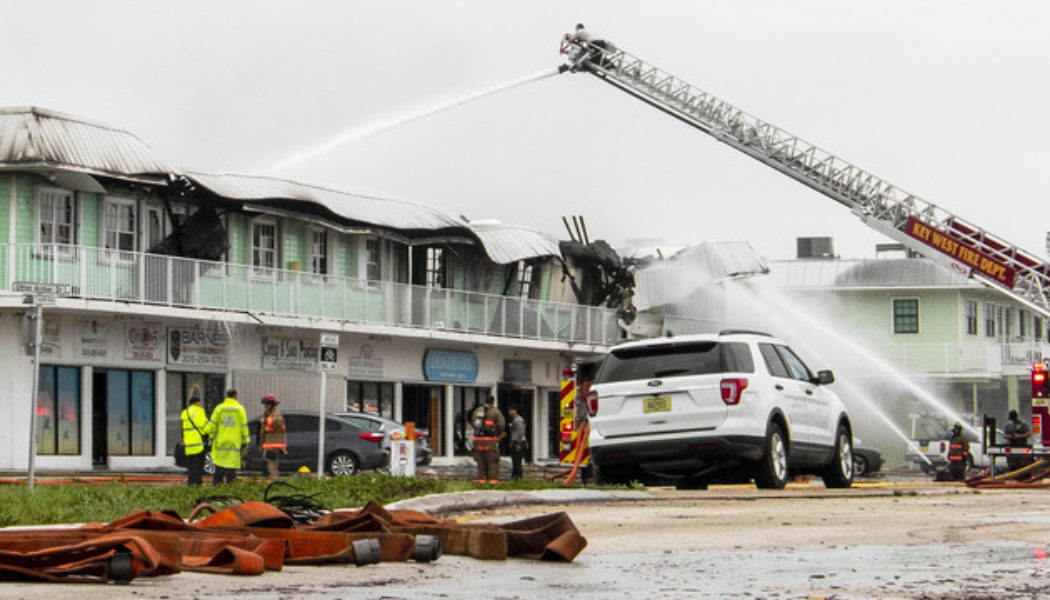“This is a catastrophic storm,” he added. “There will be catastrophic damage across the entire system,” he said.
Adding to the challenges is a nationwide shortfall of critical electrical equipment, such as certain kinds of transformers, that crews may need to restore power in parts of Florida.
Wait times to obtain some supplies are now as long as two to three years, said Joy Ditto, CEO of the American Public Power Association. That could mean a scramble to obtain parts necessary for the Ian recovery, forcing providers to drain their limited backup supplies or swap equipment with other utilities.
FPL’s Silagy said his company has equipment on hand to deal with this hurricane. Still, Ditto said she worries that the U.S. grid will be even more vulnerable when the next storm or cyberattack hits and there aren’t enough components to go around.
“Of course, we’ll prioritize restoration to existing [infrastructure] as much as possible,” she said, “but you’re just depleting stockpiles elsewhere. If people are willing to provide you those transformers elsewhere in the country, but then they get a winter storm, you’re robbing Peter to pay Paul essentially.”
Other utility trade groups have raised red flags about the supply crunch.
APPA and the National Rural Electric Cooperative Association wrote to Energy Secretary Jennifer Granholm in May, urging her to temporarily waive the energy conservation standard for manufacturers in an effort to conserve steel.
On average, wait times to secure critical materials jumped 429 percent between 2020 and 2022, according to APPA — from two to three months to about a year. A quarter of the group’s members reported a “high risk” of running out of at least one critical component.
“For some time we’ve raised supply chain issues,” NRECA’s senior vice president of government relations, Louis Finkel, said by email. “Obviously a large storm has the potential to pose complications. The supply chain challenges that the industry has been facing could become a complicating power restoration factor, but it’s too soon to know.”
Ditto said the shortages have persisted even after President Joe Biden invoked the Defense Production Act in June to try to accelerate production of clean-energy components.
Scott Aaronson, senior vice president of security and preparedness at the Edison Electric Institute, which represents for-profit utilities, said in an email that the industry is working “to prioritize and to address near-term supply constraints to respond during the hurricane and wildfire season.”
“These efforts help to ensure we are ready to share materials with companies impacted by Hurricane Ian if necessary,” he said.
Silagy said during the press call that FPL had stockpiled materials and equipment “many, many, many months ago.”
“We have secured those resources. We will be deploying those throughout our service territory,” he said. “The road ahead is going to be challenging. This is not going to be an easy storm to recover from. But, again, we are prepared to do so.”
FPL and other power companies have deployed more than 25,000 linemen and 27,000 power restoration personnel across the state to begin restoration and rebuilding efforts once the storm has cleared. FPL alone has 19,000 workers in place, Silagy said.
Utilities say it’s still too soon to know how long it will take to fully restore power. It took the Louisiana Gulf Coast weeks to recover from the violent winds of Hurricane Ida last year, despite billions of dollars spent on grid hardening. Silagy compared Ian to 2004’s Hurricane Charley, another Category 4 storm that struck Southwest Florida and sliced across the state, after which power was not restored to thousands of customers for weeks. (Ian, though, has a much wider footprint.)
Power executives emphasized that power cannot be restored — and rebuilding cannot happen — until the storm subsides and workers can safely begin repairing electrical lines and other critical equipment.
In that sense, a faster moving storm may be better for restoration times, said Ditto, versus slow-moving storms that linger for days.
“The faster it goes away then frankly the better because then you can get out there and do your job to restore power or do other damage assessments and restoration in other areas as well,” she said.
Silagy asked customers to be prepared “for extended power outages” and recommended that older customers or others who may struggle without power for a lengthy amount of time to “take an assessment of their own needs.”
He also warned that some homes or businesses or neighborhoods may see longer periods of outages depending on the damage.
“There will be many, many instances where it is simply not safe to re-energize a home or business because it has been structurally damaged,” he said.
[flexi-common-toolbar] [flexi-form class=”flexi_form_style” title=”Submit to Flexi” name=”my_form” ajax=”true”][flexi-form-tag type=”post_title” class=”fl-input” title=”Title” value=”” required=”true”][flexi-form-tag type=”category” title=”Select category”][flexi-form-tag type=”tag” title=”Insert tag”][flexi-form-tag type=”article” class=”fl-textarea” title=”Description” ][flexi-form-tag type=”file” title=”Select file” required=”true”][flexi-form-tag type=”submit” name=”submit” value=”Submit Now”] [/flexi-form]









